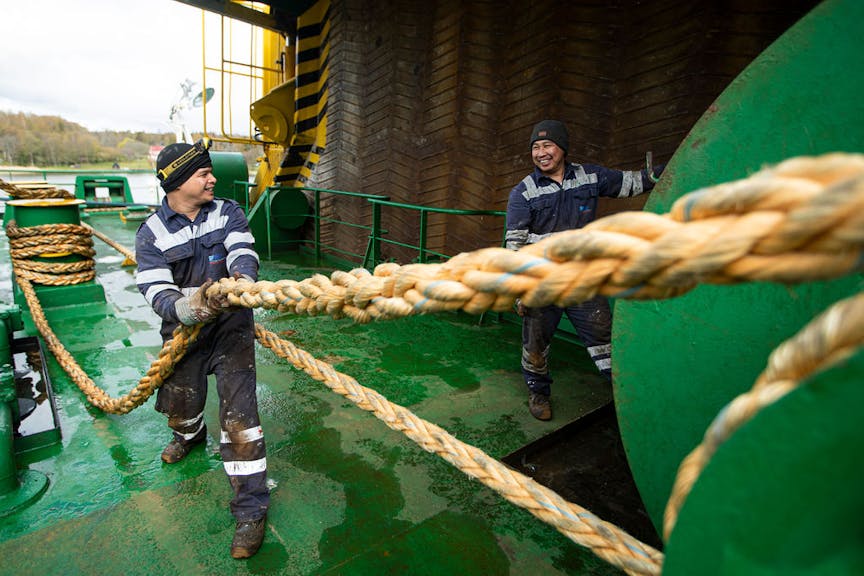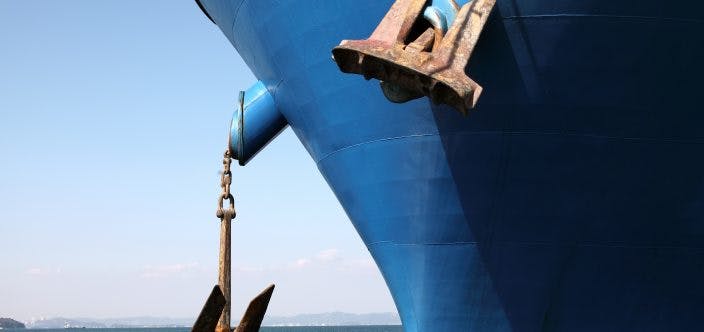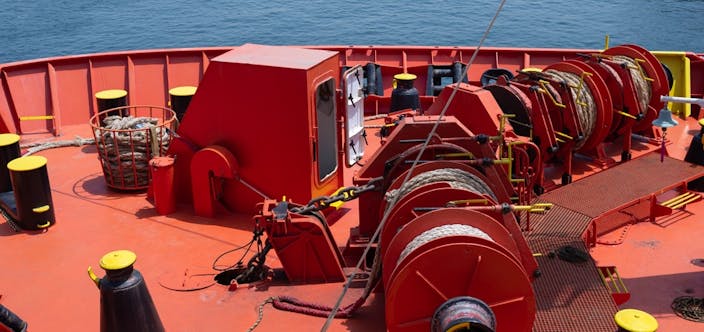Safe Mooring – Know your lines
Mooring is one of the most frequent and dangerous operations for those both onboard the ship and in the port. It requires a lot of human involvement and a high level of attention, and although it is complex, its routine nature fosters complacency. When things go wrong the consequences can be severe, and it is concerning that the number of mooring-related accidents remains high. This month’s theme is based on our safe mooring podcast with a rope manufacturer and a surveyor who gave us their perspectives on the topic. Below we highlight some of the key points raised.

Know your lines
First and foremost, it is important to select ropes that are good quality and fit for purpose!
- The Ship Design MBL is an important value for ordering ropes to allow the manufacturer to know what the strength of the line needs to be.
- Ensure that the ropes are the correct type and dimension for your vessel and winches. There is sometimes an incorrect perception that the bigger and stronger the rope is, the better it is: The rope is designed to break before the equipment is damaged, so it is important to think of the system as a whole and not make decisions about ropes without considering the rest of the mooring components. For example, the capacity limit of the winch.
- Mixed mooring should be avoided (using two different types of ropes with different breaking strengths in the same direction thereby not spreading the load equally between the two).
Once we have the right ropes, we need to know how to use them and how to maintain them!
- Winches with warping and storage drums: keep only 2-3 layers of rope on the warping drum to prevent the rope from cutting in. A cut-in rope can be difficult and time-consuming to release and can easily lead to an incident.
- A good rope maintenance regime with regular inspections supports safety by preserving the rope’s condition and increasing its life expectancy. Ropes should be kept off wet decks and it is recommended practice to cover ropes for longer sea voyages, especially on open mooring decks, to prevent damage to the fibres caused by sun/UV light and salt.
- Visual inspections can identify cuts and abrasions in the line, but it is important to remember not to overload the ropes because this causes damage that you cannot see.
- Have proper retirement criteria for your ropes.
Make sure your mooring station is safe!
- It is vital to keep the mooring area tidy and wash away salt residues before mooring operations.
- Test winches and adjust brake pressure and break band clearance according to manufacturer’s instructions.
Test your communication equipment and confirm hand signals before each mooring operation. - Check for twists in the rope. A twist in the rope is a common issue and one twist on one meter of rope reduces its strength by 6%. Therefore, heavily twisted ropes have significantly decreased strength and can break far more easily than expected.
Everyone involved in mooring needs the right knowledge!
- Do regular training; follow recommended procedures, follow the rope manufacturer’s instructions for using the rope (all certified mooring lines come with guidelines for use and care), and provide general mooring knowledge through ISM/SMS.
- Wear the right personal protective equipment (PPE).
- Ensure good familiarisation routines for new crew, conduct toolbox talks, and provide feedback for a better shared mental picture and easier communication.
The majority of mooring incidents resulting in personal injury are caused by parted ropes, second are injuries caused by non-parted ropes (such as ropes slipped off or jammed on equipment, snagged lines, and crew caught up in ropes/bights), last are incidents caused by equipment failure. This clearly highlights the importance of good line maintenance, familiarisation with correct mooring procedures, and situational awareness.
The role of research and design
Rope manufacturers are continuously developing new products and improving existing rope technology. The customers/end users should also play an active part in the demand for safer lines and there needs to be a strong collaboration between the rope manufacturers and the users.
The latest rope innovations include the snapback arrestor core, snapback arrestor rope sleeve, and new materials such as Dyneema. Listen to the safe mooring podcast to hear more about the developments underway in rope design and manufacturing LINK.
Upcoming regulatory changes
Mooring, in its entirety, is still largely unregulated, and there continue to be numerous repeated accidents. Well-designed regulation provides for improved safety and consistency. The new SOLAS requirements entering into force in January 2024 will help to clarify what safe mooring looks like, and improve mooring safety by introducing additional requirements for the selection, arrangement, inspection, maintenance, and replacement of mooring equipment, including lines. Documentation regarding the design of mooring arrangements and the selection of mooring equipment will be required to be provided and kept on board.
SOLAS regulation II-1/3-8 on towing and mooring equipment. The new requirements are incorporated in SOLAS Regulation II-1/3-8 on towing and mooring equipment, and are supported by the following guidelines:
- Guidelines on the design of mooring arrangements and the selection of appropriate mooring equipment and fittings for safe mooring (MSC.1/Circ. 1619)
- Guidelines for inspection and maintenance of mooring equipment including lines (MSC.1/Circ.1620)
- Revised guidance on shipboard towing and mooring equipment (MSC.1/Circ. 1175/Rev.1)


